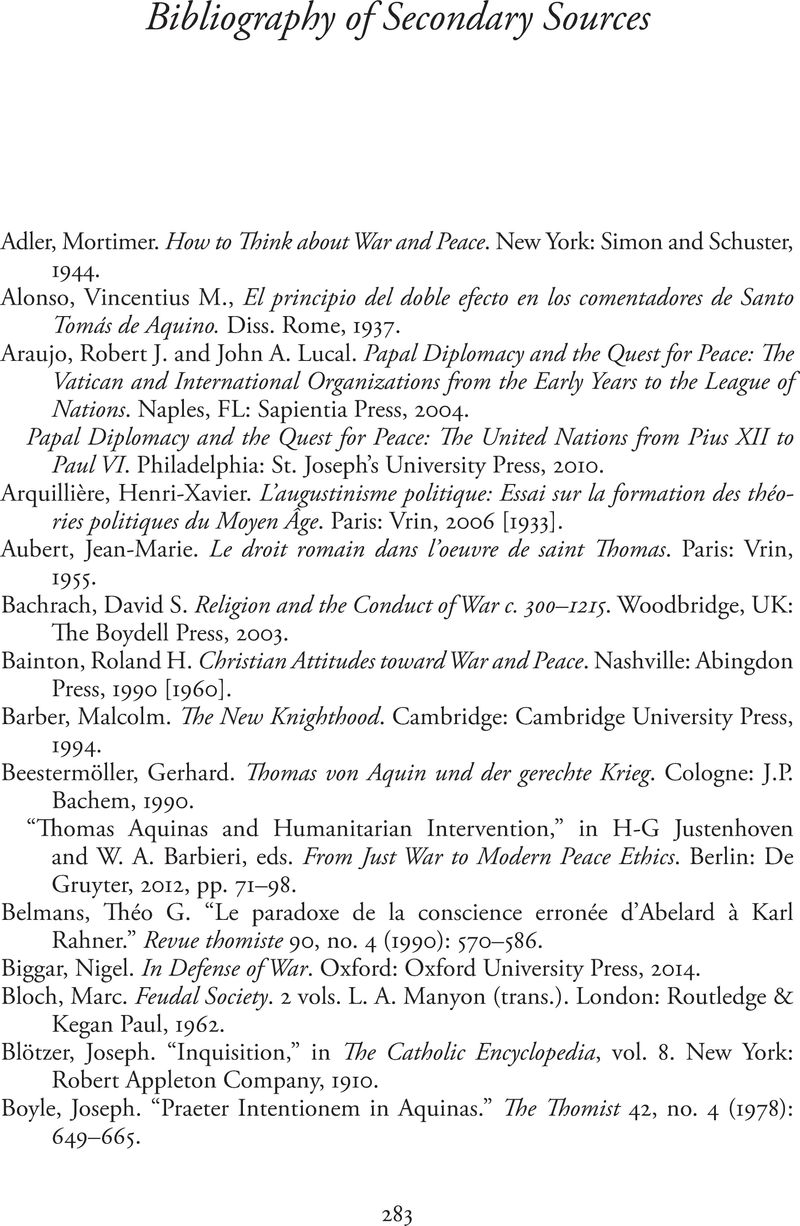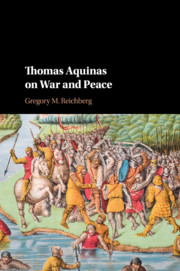Book contents
- Thomas Aquinas on War and Peace
- Thomas Aquinas on War and Peace
- Copyright page
- Contents
- Preface and Acknowledgments
- Abbreviations and References for Works Frequently Cited
- Introduction
- Part I Just War in a Typology of the Virtues
- Part II Selected Topics
- Bibliography of Secondary Sources
- Index
- References
Bibliography of Secondary Sources
Published online by Cambridge University Press: 13 October 2016
- Thomas Aquinas on War and Peace
- Thomas Aquinas on War and Peace
- Copyright page
- Contents
- Preface and Acknowledgments
- Abbreviations and References for Works Frequently Cited
- Introduction
- Part I Just War in a Typology of the Virtues
- Part II Selected Topics
- Bibliography of Secondary Sources
- Index
- References
Summary

- Type
- Chapter
- Information
- Thomas Aquinas on War and Peace , pp. 283 - 290Publisher: Cambridge University PressPrint publication year: 2016

